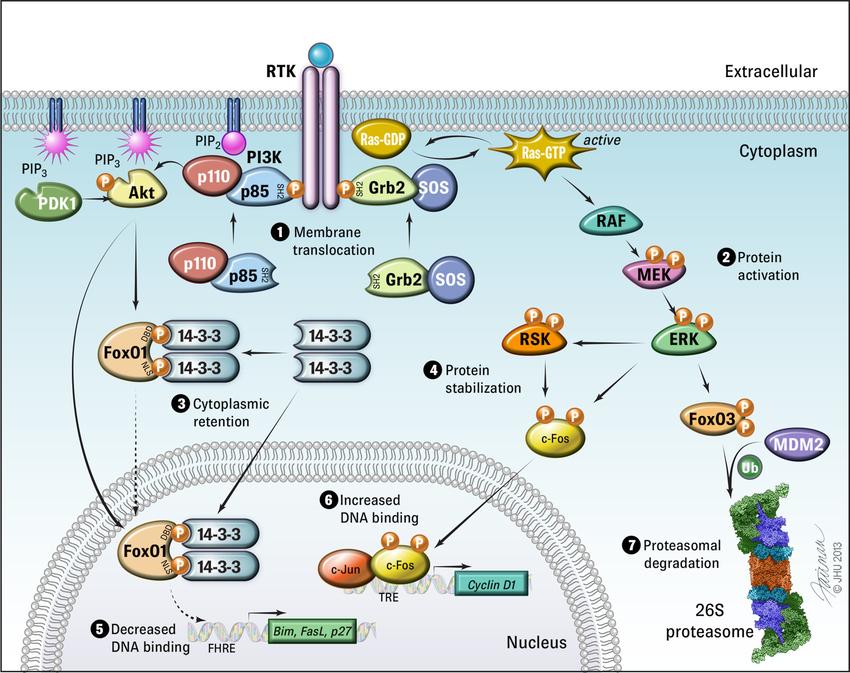Phosphorylated Protein Analysis Service
- Home
- Applications
- Proteomics Analysis Services
- Protein Post-Translational Modification Analysis Services
- Phosphorylated Protein Analysis Service
Service Details
Phosphorylation is one of the most important post-translational modifications in cellular activities, and it is involved in the regulation of almost all cellular activities, including cell proliferation, differentiation, and apoptosis. Phosphorylation modification has the characteristics of simplicity, flexibility and reversibility, and the availability of ATP, a donor of phosphate groups, is a common regulatory means in eukaryotic cells and plays a role in various cellular activities, including glycolysis, protein -protein interactions, protein degradation, enzyme inhibition, homeostasis, etc. Protein phosphorylation is the reversible process of attaching phosphate groups to proteins catalyzed by enzymes, mainly on serine, threonine or tyrosine residues. Notably, mass spectrometry (MS) has revolutionized signal analysis by allowing rapid identification of phosphorylation sites in a precise and sensitive manner and is a powerful tool for phosphorylation analysis.
 Fig. 1. Functional
significance of protein phosphorylation. (Roux P P, et al., 2013)
Fig. 1. Functional
significance of protein phosphorylation. (Roux P P, et al., 2013)
Creative Proteomics provides a high-quality and highly sensitive phosphoproteome analysis platform to determine phosphorylation and phosphorylation sites by applying mass spectrometry to your phosphopeptides.
At Creative Proteomics, we can perform large-scale analysis of complex samples, which often requires enrichment of peptides prior to mass spectrometry analysis. Our highly skilled personnels provide various enrichment methods for phosphorylated peptides according to experimental needs, including TiO2 and IMAC enrichment, solid-phase metal affinity chromatography (IMAC) enrichment, and phosphorylated antibody enrichment.
Based on our well-established phosphoproteome analysis platform, Creative Proteomics can provide an accurate one-stop phosphoprotein analysis service package, including protein extraction, digestion, phosphopeptide enrichment, peptide separation, MS analysis and bioinformatics analyze.
Here, we can provide but not limited to:
Our analytical services strictly follow ICH Q6B guidelines, and a high-quality phosphorylated protein analysis services are provided through high-performance mass spectrometry (MS) and liquid chromatography systems, etc., which ensures that our phosphorylated protein assays have the following attractive features.
Thanks to our powerful mass spectrometry sequencing platform, Creative Proteomics provides a one-stop hosphorylated protein analysis service. Our experienced scientists work with you to develop tailor-made analytical solutions. All you need to do is send us your samples, communicate your research goals with our experts, and we'll go through the next steps and provide you with a full technical report. Please feel free to contact us with any questions regarding hosphorylated protein analysis.
References
For research use only, not intended for any clinical use.